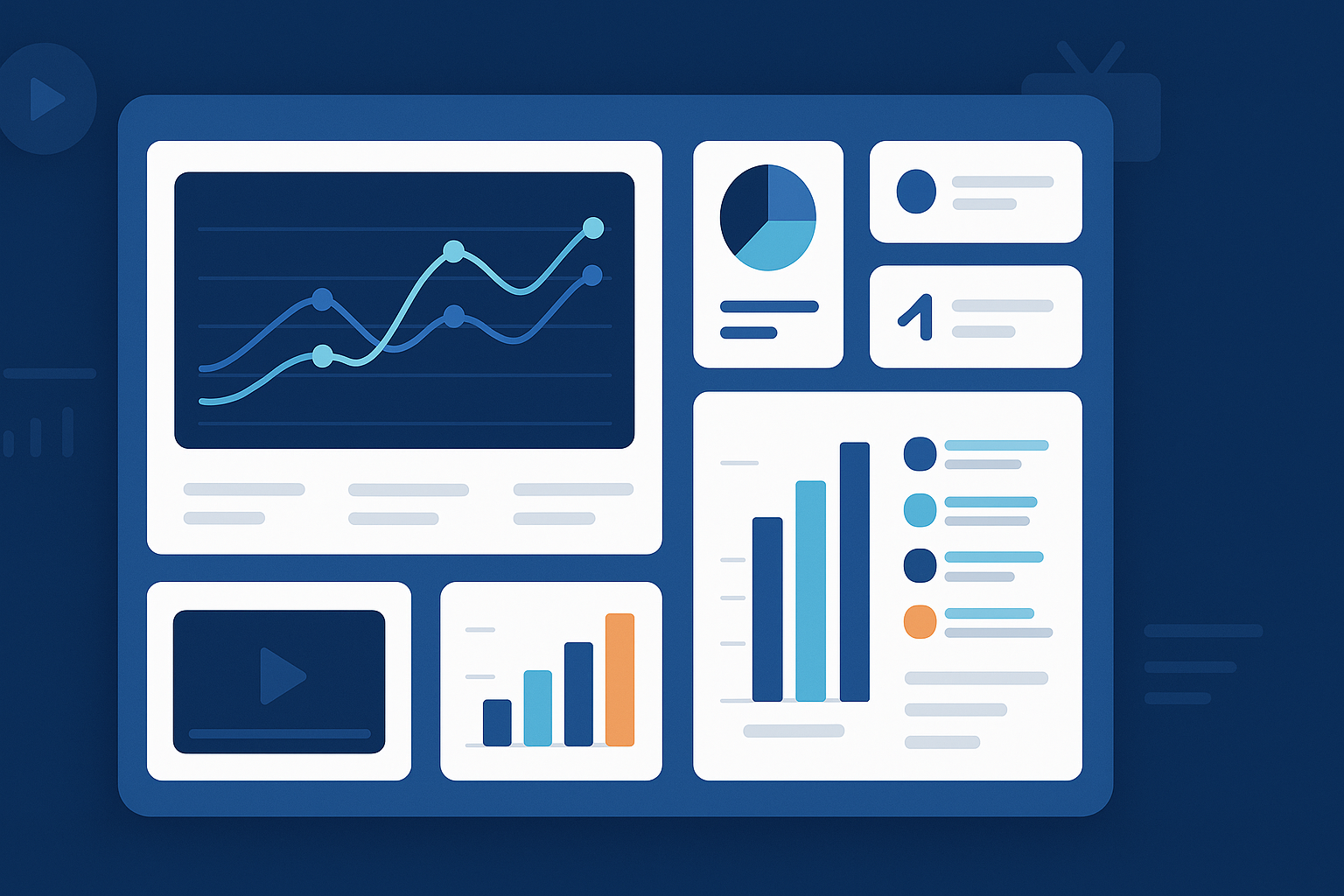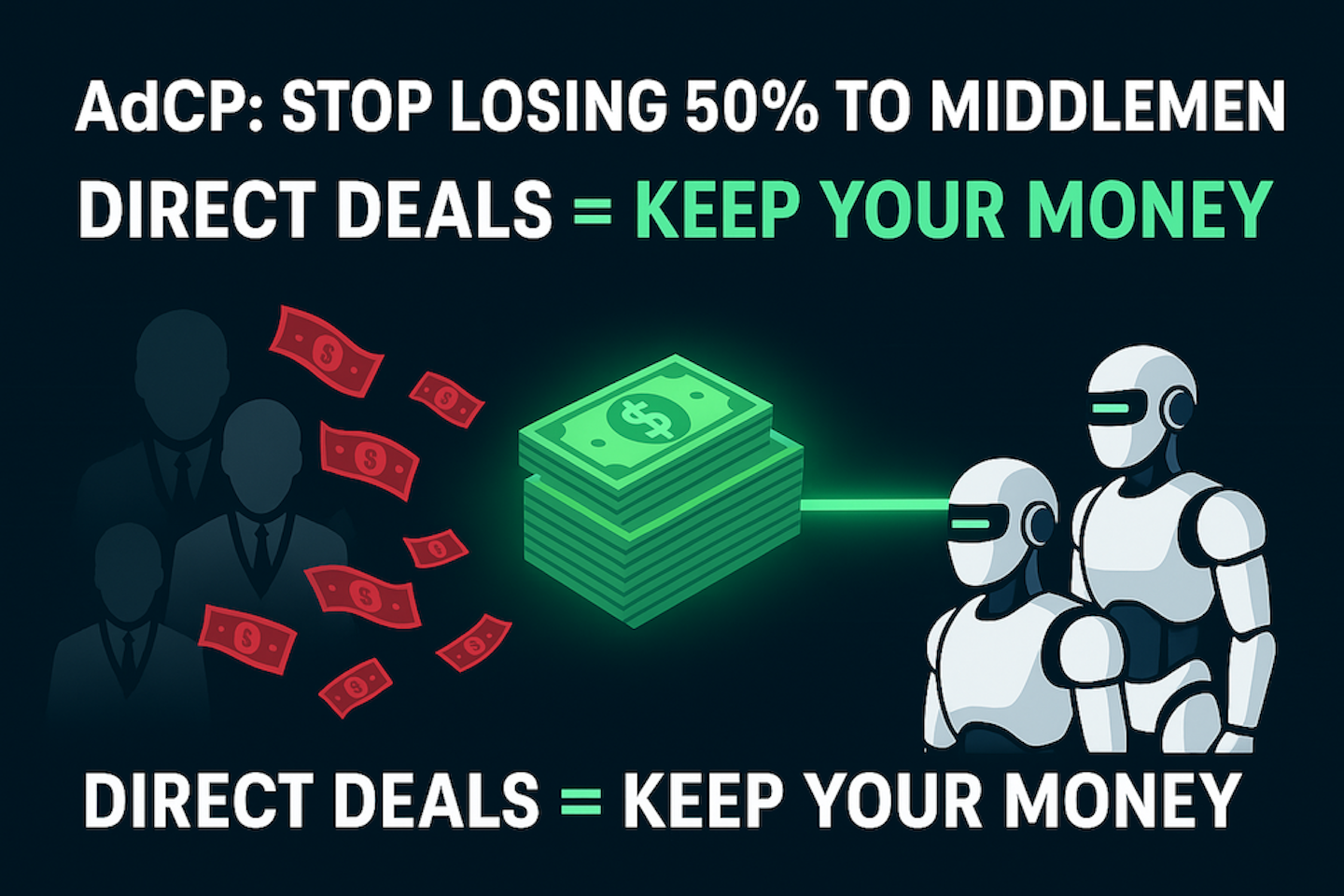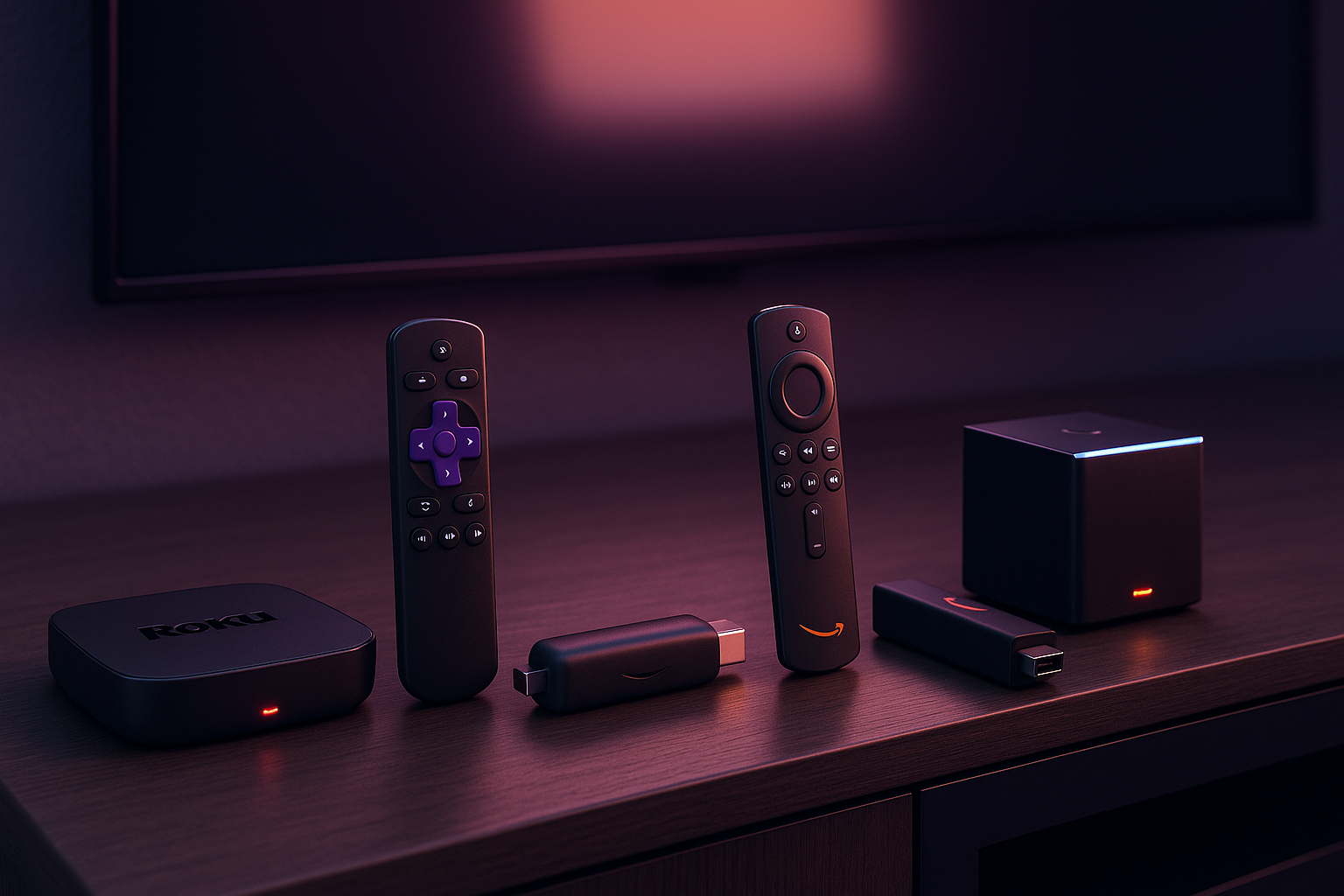The FAST Channel Audit: 7 Metrics You Should Be Tracking Daily
Running a FAST channel can feel like flying a plane while you’re still building it. There’s so much happening at once—content scheduling, ad operations, platform relationships, technical infrastructure—that it’s easy to lose sight of the numbers that actually matter. You might be checking your dashboard daily, but are you looking at the right things?
Most publishers obsess over total view counts and revenue totals, which makes sense. Those are the headline numbers. But the real insights, the metrics that actually help you make better decisions and grow your channel, often get ignored until there’s a problem.
Think of it this way: if you only checked your car’s speedometer and never looked at the fuel gauge, oil pressure, or engine temperature, you’d be in for some unpleasant surprises. Your FAST channel works the same way. You need a complete picture of what’s happening, not just the vanity metrics.
So let’s talk about the seven metrics you should be tracking every single day. These aren’t academic exercises or nice-to-haves. These are the numbers that tell you whether your channel is healthy, whether your monetisation is working, and where you should focus your energy.
Average Session Duration: The Truth About Engagement
Here’s something that might surprise you: a million views means nothing if people are bouncing after thirty seconds. Average session duration tells you how long viewers actually stick around, and it’s one of the most honest indicators of whether your content is working.
According to recent data from Conviva’s State of Streaming reports, successful FAST channels typically see average session durations between fifteen and forty-five minutes, depending on their content type. If you’re running a movie channel, you should expect longer sessions. A quick-hit comedy clip channel will naturally have shorter sessions, and that’s fine. The key is knowing your baseline and watching for changes.
When your average session duration drops, it’s usually telling you something specific. Maybe your content rotation has gotten stale. Maybe your ad load is too aggressive. Maybe you’ve hit a rough patch in your programming schedule where the content quality dips. Whatever it is, this metric will flag it before your revenue numbers do.
Breaking this down by time of day and day of week reveals useful patterns. Weekday afternoon sessions are often shorter than weekend evening sessions, which makes sense when you think about how people consume free streaming content. Use these patterns to optimize your programming schedule and ad placement.
Fill Rate: Your Monetisation Health Check
Fill rate is the percentage of available ad slots that actually get filled with paid advertisements. If you have ten ad breaks in an hour and only seven of them show actual ads, your fill rate is seventy percent. The other thirty percent is either showing house ads, PSAs, or dead air, and you’re losing money.
This metric matters more than almost anything else when it comes to revenue. You can have amazing traffic, but if your fill rate is sitting at fifty or sixty percent, you’re leaving serious money on the table. According to IAB guidelines and industry benchmarks, you should be aiming for fill rates above eighty-five percent, with the best-performing channels hitting ninety to ninety-five percent.
Low fill rates usually point to one of three problems. First, your inventory might not be properly integrated with demand sources. This is especially common if you’re only working with one or two SSPs instead of building a robust programmatic stack. Second, your audience targeting data might be incomplete or incorrect, making your inventory less attractive to advertisers. Third, you might have technical issues with your ad server or SSAI implementation that are causing ads to fail.
The good news is that fill rate problems are usually fixable. Start by auditing your ad tech stack and making sure you’re connected to multiple demand sources. Check your server-side ad insertion setup to ensure ads are being called and delivered properly. And talk to your programmatic partners about performance—they can often see issues on their end that aren’t visible in your dashboard.
Completion Rate: Are Viewers Watching Your Ads?
Your completion rate tells you what percentage of ad impressions are actually being watched all the way through. This matters for two big reasons. First, many advertisers only pay for completed views, so incomplete ads mean lost revenue. Second, low completion rates can hurt your reputation with advertisers and demand partners, making them less likely to bid on your inventory in the future.
The industry standard for video completion rates, according to data from FreeWheel and other ad tech providers, typically falls between seventy and eighty-five percent for CTV inventory. If you’re seeing completion rates below seventy percent, something needs attention.
There are a few common culprits behind low completion rates. The most obvious is ad load—if you’re jamming too many ads into breaks or running breaks too frequently, viewers will tune out or switch channels. But technical issues matter too. Slow ad loading times, buffering during ads, or audio level mismatches between content and ads will all drive viewers away.
One thing worth noting: completion rates often vary significantly by ad length. Fifteen-second ads typically have much higher completion rates than sixty-second spots. This is useful information when you’re structuring your ad pods and negotiating with demand partners.
eCPM: What Your Inventory Actually Earns
eCPM, or effective cost per thousand impressions, is the number that tells you what your ad inventory is actually worth. It takes all your ad revenue and divides it by your total impressions, giving you a clear picture of how much you’re earning per thousand views.
This metric cuts through a lot of confusion. You might hear that your fill rate is great or that you’re serving millions of impressions, but eCPM tells you the bottom line: how much money is that actually generating? According to Samsung Ads research and industry benchmarks, healthy FAST channels typically see eCPMs ranging from five dollars to twenty-five dollars, depending on content vertical, audience quality, and geographic mix.
If your eCPM is trending down, you need to figure out why. Sometimes it’s seasonal—advertising budgets fluctuate throughout the year, with Q4 typically commanding premium rates. But if you’re seeing declines outside of normal seasonal patterns, it could mean your audience mix is shifting toward less valuable demographics, your content is attracting lower-quality demand, or you’re not properly optimized for programmatic bidding.
The fix usually involves a combination of audience targeting improvements, better integration with high-quality demand sources, and potentially adjusting your content strategy to attract more advertiser-friendly audiences. Geography matters too—US-based viewers typically command much higher eCPMs than international audiences, so understanding your geographic mix is essential.
Unique Viewers: Understanding Your Real Audience Size
Total views are nice, but unique viewers tell you how many actual people are watching your channel. The difference matters. You could have a million views that came from ten thousand people watching repeatedly, or a million views from a million different people who only watched once. Those scenarios require completely different strategies.
Tracking unique viewers daily helps you understand whether you’re building an audience or just churning through viewers. A healthy FAST channel typically shows steady growth in unique viewers over time, with a solid ratio of returning viewers mixed in. If your unique viewer count is stagnant while total views keep climbing, you’ve got a loyal core audience but you’re not expanding your reach. If unique viewers are growing but total views aren’t keeping pace, people are sampling your channel but not sticking around.
The ideal pattern shows both metrics growing together, with a healthy percentage of viewers coming back multiple times. This indicates you’re both acquiring new audience members and keeping them engaged. Platform analytics from Roku and other distributors usually provide this data, though the definitions can vary slightly between platforms.
Viewer Drop-Off Points: Where You Lose Your Audience
This metric shows you exactly where viewers are leaving your stream. Are they dropping off during certain content blocks? During ad breaks? At specific times of day? Understanding drop-off patterns gives you actionable insights for improvement.
Most analytics platforms, including those provided by Roku and other major distributors, offer some form of drop-off or abandonment data. The key is looking at it daily and identifying patterns. If you notice viewers consistently leaving at the same point in your programming rotation, that content block might need attention. If drop-offs spike during certain ad breaks, your ad load might be too heavy at those points.
Time-based drop-offs tell you different things. A steady decline in viewership throughout the day might just be natural viewing patterns. But sudden drops at specific times suggest programming issues. Maybe you’ve got a weak content block in your schedule, or perhaps you’re running the same programming loop too frequently and viewers are hitting the same content they saw earlier.
The fix depends on what you discover. Content-related drop-offs usually mean you need to refresh or replace that portion of your schedule. Ad-related drop-offs might mean adjusting your ad load or improving ad quality. Technical drop-offs—sudden mass exits that don’t correlate with content or ads—usually point to streaming infrastructure issues that need immediate attention.
Error Rate: The Metric Nobody Wants to Talk About
Error rate measures how often your stream encounters technical problems: buffering, failed ad calls, stream interruptions, or other technical hiccups. According to Conviva’s quality of experience research, even small increases in error rates can have devastating effects on viewer retention and overall channel performance.
Here’s the uncomfortable truth: many FAST channel operators don’t track error rates closely because they don’t want to know how bad things are. But ignoring technical problems doesn’t make them go away—it just means you’re losing viewers and revenue without understanding why.
A well-functioning FAST channel should have an error rate below two percent. Anything above five percent is actively hurting your business. These errors translate directly into lost viewers, failed ad impressions, and damaged relationships with platform partners who expect reliable streams.
The most common sources of errors include CDN issues, ad server timeouts, improper SSAI configuration, and insufficient origin server capacity during peak viewing times. The good news is that once you start tracking error rates systematically, you can usually identify and fix the root causes. Many streaming infrastructure providers, including AWS Media Services and other platforms, offer detailed error logging that can help you pinpoint exactly what’s going wrong.
Putting It All Together: Your Daily Dashboard
The power of these metrics isn’t just in tracking them individually—it’s in understanding how they relate to each other. When your fill rate drops but your eCPM rises, that tells a specific story about demand quality. When session duration declines alongside increasing error rates, you know you have technical problems affecting the viewer experience.
Building a daily routine around these seven metrics doesn’t have to be complicated. Most streaming analytics platforms can be configured to show all of this data in a single dashboard. The key is actually looking at it every day and training yourself to spot patterns and anomalies.
Some practical tips for making this work: set up alerts for significant changes in any of these metrics. A sudden drop in completion rate or spike in error rate deserves immediate attention. Schedule a specific time each day to review your dashboard—many channel operators do this first thing in the morning with coffee. And keep a simple log of any changes you make to content, ad settings, or technical infrastructure so you can correlate those changes with metric movements.
The goal isn’t to achieve perfect numbers across all seven metrics. The goal is to understand what’s happening with your channel so you can make informed decisions. When you notice a problem, you can fix it. When something’s working, you can double down on it. When partners ask about performance, you can speak confidently about what the data shows.
What to Do With This Information
Knowledge without action doesn’t help anyone. Once you’re tracking these metrics daily, the next step is using them to drive improvements. Start with the biggest problems first—if your error rate is high, fix your technical infrastructure before worrying about ad load optimization. If your fill rate is below seventy percent, focus on demand partnerships before fine-tuning your content strategy.
Most importantly, remember that these metrics exist to help you build a better channel, not to make you feel bad about where you are right now. Every successful FAST channel started somewhere, and most of them had rough patches along the way. The difference between channels that succeed and those that struggle often comes down to this: the successful ones pay attention to the right metrics and use that information to get better.
Your metrics tracking template is ready to download below. It includes all seven of these metrics with space for daily entries, weekly averages, and notes about changes you’re testing. Use it consistently for a month and you’ll have a much clearer picture of your channel’s health and where to focus your energy.
The streaming landscape keeps evolving, but these fundamentals don’t change. Viewers want reliable, engaging content with a reasonable ad experience. Advertisers want quality inventory that delivers completed views. Platform partners want channels that meet technical standards and keep viewers happy. Track these seven metrics daily and you’ll have the insights you need to deliver all of that.




Related news
View all


